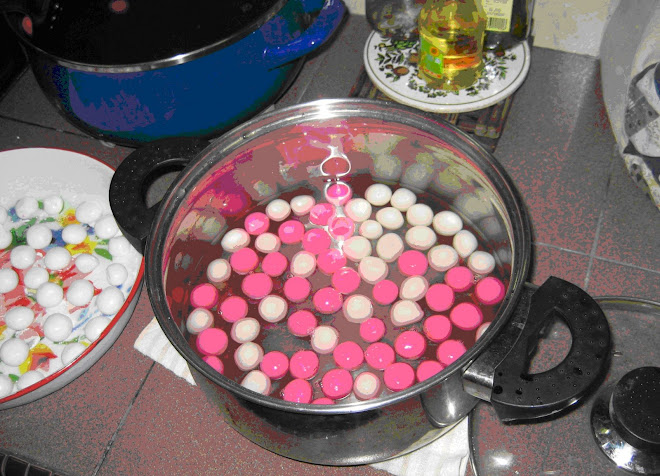
Alain Ducasse
Spoon Food and Wine review
I am a big fan of books in general but have a very soft spot for food books and cook books. A post on Twitter recently by Barbara from winos and foodies on the unusability of some celebrity chef’s (he who shall be nameless!) recipes got me looking at cookbooks with a more critical eye. Sure, we’ve come across recipes that look good on paper but fail miserably even when you follow it to the tee. I think most of us have had that experience. Some recipes are perhaps inadequately tested in the kitchen, editors may have missed a typo in the amount of ingredients needed. A whole gamut of things can go wrong when dealing with recipes and cookbooks.
I was excited when I found a book with Alain Ducasse’s recipes at the library. What was I expecting to see in a cookbook by the famous and very prolific French chef? Did I expect to see elements of haute cuisine reflected in the construction of text and photographs? Did I expect elegance and refinement reflected in the recipes? Monsieur Ducasse has many, many restaurants under his belt: his bars, restaurants and bistros litter the cities and countrysides of France, Monaco, Tokyo, America, Lebanon, Italy, England and Mauritius. Ducasse has a very impressive line up of eateries and yes, even more impressive that some of these restaurants have multiple Michelin stars. So what did I think of this cookbook?
The Spoon Food and Wine cookbook covers recipes from Ducasse’s Spoon franchise. In his introduction, he states that the book was conceived in the ‘spirit of exploration, analysis and iconoclasm.’ He continues, “Anyway, that is how this book was designed. You will see that there are no one-way streets, that you are not trapped on a ‘motorway’ of taste. It’s a case of ‘as you like it’. If you want to take a side turning, reverse, start again, no one will stop you. But, when it comes to stopping short – no way! …in this sense, the cooking of Spoon is instinctive: chew, munch, eat, drink. These ‘deconstructed’ dishes have all the adapatability of basic cooking. What I like about the ethos of Spoon is that it combines the simplest, most fundamental gesture – dipping a spoon into an earthenware bowl – with modern sophistication.’
I laughed at the motor highway metaphor for cooking styles and then I became confused over the description of the spoon being dipped into an earthenware bowl with utter modern sophisticated abandon. Wait a minute, my detection of pretension/wanker siren is going off! I know celebrities have great authority and say in a lot of things but when does an editor not edit or refine a clumsy introduction? It gets worse from here. The recipes seem relatively easy enough and aren’t overly too complicated but the problem with this book lies in its design elements. Surely you can have a well-designed book (think Murdoch Books’ plethora of beautiful and practical cookbooks) with good-looking visuals without the book looking like the contents of a dog’s breakfast.
The designer somehow has managed to turn a cookbook into a pseudo-people/fashion shoot and managed to talk the editor into agreeing to use the photos. Shots of attractive young things lounging in restaurants are interspersed throughout the book. Don’t get me wrong, the photographs in the book are beautifully and artistically shot.

What I would like to know is whether people find over-the-top design/photographic elements in a cookbook detract from the recipes and cooking techniques. I found my eyes roving across the pages, struggling to look for some semblance of ease of readability. Typographic inconsistencies rule on the page – recipe ingredients are condensed and line spacing reduced. The font used for the cooking instructions, on the other hand, is enlarged but printed ultra light with cooking steps in an extra bold red font. These red ‘steps’ punctuate the page too boldly and I found them very distracting because the actual instructions were so light therefore hard to read. Some of the choices of very busy background photographs render the ultra light font almost invisible.

By now you’re probably thinking ‘what a bloody nitpicker’ but I am after all, a professional book indexer and I tend to look at things in great detail. If you’re thinking that I can’t pick this book apart anymore, I haven’t even started on the index! Two thirds of the pages dedicated to the index are supplemented by very large photographs of Ducasse’s compotes and salsas in tumblers. What use is an index if you can’t use it or refer to it? (FYI, this link to a badly indexed book is quite hilarious)
If you think you want to look up chicken dishes – you’d look under C for chicken or P for poultry. Well, chicken is not under ‘chicken’ or ‘poultry’ surprise, surprise. It’s under ‘seared chicken fillets’. Seafood is nowhere to be found, instead you’ll find it also under ‘seared red mullet, etc’ Desserts? Ice creams? Try ‘The big meringue’.
Tomatoes? Forget it if you think it’s under ‘vegetables’ or ‘tomatoes’ – it’s under ‘stuffed tomatoes and potato straws’. I could go on and on but I won’t bore you. If there was ever a nomination for a bad index: this is it. This thoroughly inadequate index, is after all, a fitting end to a very superficial fashionable book about the way food should look and the kinds of people who aspire to eat at the Spoon establishment. There is no warmth or generosity depicted in any of the pictures – the images of food is gorgeous (yes) but clinical and exacting, devoid of any emotion or spontaneity. This book leaves me stone cold and I am glad I didn’t invest money indulging in something so inaccessible and unapproachable.

No comments:
Post a Comment